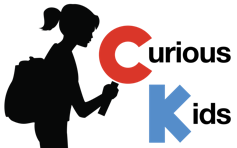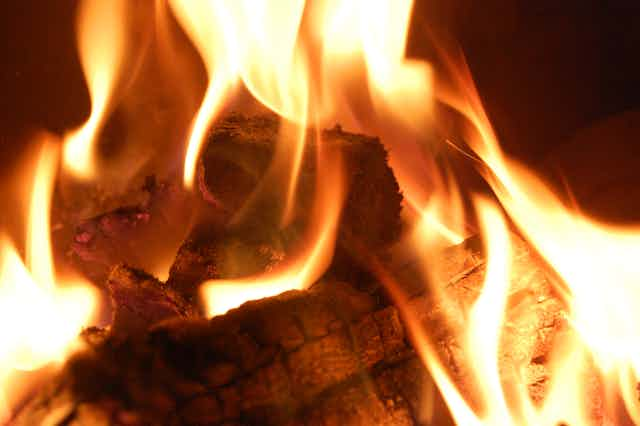This is an article from Curious Kids, a series for children of all ages. The Conversation is asking young people to send in questions they’d like an expert to answer. All questions are welcome: find details on how to enter at the bottom.
What is fire? – Lyra, age seven, Oxford, UK
Thanks for the question, Lyra. Basically, fire is light and heat that comes from a special kind of chemical reaction, which humans figured out how to make hundreds of thousands of years ago.
To understand how that reaction works, there are a few things that we need to learn about the world around us. Everything that you see and touch is made up of tiny things called atoms. You can think of atoms as really, really small bits of Lego – so small you can’t even see them.
Atoms join together to form molecules, and molecules join together to form the objects we can see and feel in everyday life. For example, wood is mainly made of a type of molecule called cellulose and each molecule of cellulose is made of atoms called carbon, oxygen and hydrogen.
Now, to see how the chemical reaction works, let’s imagine that you’re living in a cave 400,000 years ago, and that you’re one of the very first people to use fire.
You’re hungry and you want to cook an animal that you caught earlier in the day. On your way back to the cave, you collected some twigs and sticks for your fire. But there’s two other things you need before you can light the fire. You need oxygen – but luckily there’s plenty of that in the air (though you wouldn’t have known about it at the time). And you’ll need some heat to start things burning.
Of course, matches haven’t been invented yet, so instead you quickly rub two sticks together. The rubbing causes friction, which heats up the sticks – like when you rub your hands together fast to warm them up. This heat causes all the molecules in the wood to jiggle around.

When a part of a stick gets hot enough, the molecules are moving about so much they start to break apart. This is when you start to see smoke. The smoke is all those broken up molecules escaping from the wood as gases.
But you haven’t made fire yet – you need things to get even hotter! So you keep rubbing the sticks together really hard. Eventually, the gas molecules from the wood get so hot they bash into oxygen in the air and join together. When they do that, they make new molecules called water and carbon dioxide. At the same time, they also make heat and light. Well done, you’ve made a flame! You can stop rubbing the sticks together now.
As you put more twigs on your small fire, the heat carries on breaking down the molecules in the wood, and making more gases. These gases catch fire as well. But something else needs to happen before your fire can really grow. When the gases leave the wood you get left with charcoal. Then, as your fire gets even hotter, the charcoal also starts to combine with more oxygen, making even more heat and light. Now things are hot enough to start cooking.
You make your meal, and after a while you run out of fuel for your fire. All the wood and charcoal burns away leaving ash. This is the stuff in the wood that doesn’t burn. Without the light and heat from the fire, there’s nothing to do but go to sleep – but at least you’re not hungry anymore.
Hello, curious kids! Have you got a question you’d like an expert to answer? Ask an adult to send your question to us. You can:
* Email your question to curiouskids@theconversation.com
* Tell us on Twitter by tagging @ConversationUK with the hashtag #curiouskids, or
* Message us on Facebook.

Please tell us your name, age and which town or city you live in. You can send an audio recording of your question too, if you want. Send as many questions as you like! We won’t be able to answer every question, but we will do our best.
More Curious Kids articles, written by academic experts:

